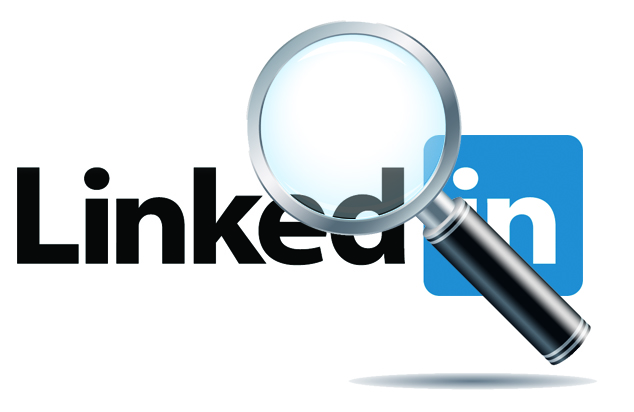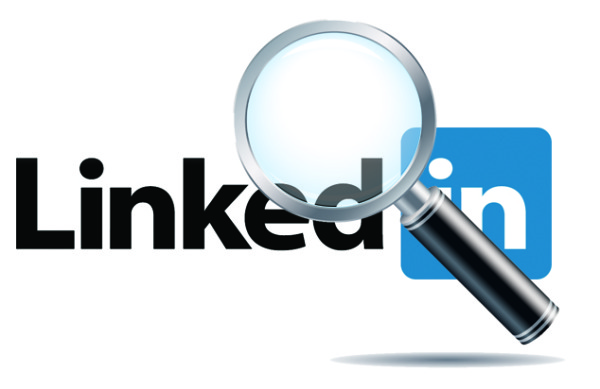
by MIMO Solutions | attitude, behavior, sales, social media, social media marketing, Social Networking, tips
All salespeople would love more referrals and introductions to qualified prospects.
I don’t think I am breaking any new ground there, but how exactly does that work these days. Just a few years ago, you only had a couple of options. You could personally introduce two people, or you could call one person or the other on the phone and tell them to take the other’s call. Now you can give a LinkedIn introduction, recommendation, or endorse someone for a skill. You could like their post on Facebook or suggest a friend to someone. You might re-tweet an offer from a business friend on Twitter, or pin a picture of new product that you like on Pinterest. Of course you can do a combination of these on Google + or a number of other sites as well.
Somehow these new forms of referrals don’t seem to have the same pull as the referrals of a few years ago. Maybe it is just the shear number of things we “like” that they have been watered down, but I think there is more than that. I believe the impersonal nature of these endorsements damage the credibility of the referral and possibly the person doing the connecting.
In his book “Endless Referrals,” Bob Burg said, “All things being equal, people will do business with — and refer business to— those people they know, like and trust.”
There is no doubt that social networking has transformed this process. It is possible to do a quick search, and in seconds, “know” about a new person or business. We can even see what they are about and get a pretty good and accurate feeling about whether we “like” them or not based on their website or social media account, but what about that “trust” part. Social networking introductions, recommendations and referrals, also know as “social proof,” definitely add to the amount of trust developed.
My thought is that in most cases social proof provided online doesn’t add near the amount of trust that personal introductions did before the Internet era. Charles Green in his book, “The Trusted Advisor,” defined trust this way…
Trust Quotient = (Credibility + Reliability + Intimacy) / Self-Orientation
Using this as the standard definition of trust in an online referral situation, if your friend recommends a dentist on LinkedIn, there is a decent chance that you will find him credible in this situation, assuming he has used or at least knows this dentist. Also, it is unlikely that he is doing this selfishly, although sometimes companies do pay for endorsements online or run contests to like their company, in which case it would increase the self-orientation.
I think the lack of trust in online referrals falls between reliability and intimacy. Hopefully, we are all aware of the reliability issues with information found on the Internet. However let’s explore it in this context, sometimes people like and share endorsements for companies they truly like, and other times the just click “Like” without much thought. How can we trust that they really thought about the consequences of this action. Just because you follow a Celebrity on Twitter doesn’t mean you would go see their latest movie… It becomes very hard to rely on any specific action as a trigger for our trust in the level and intensity of the referral.
Perhaps more importantly, there is very little intimacy in these types of interactions. Intimacy in the trust equation means the sharing of honest, and sometimes private or vulnerable information. When we share our thoughts on social networks, we do so public and with a special filter on the information. We judge how it will be perceived by others who view it. For example, we might share intimately an embarrassing experience at the proctologist with close friend, but we will probably be more guarded about it on Facebook, Google or LinkedIn.
So what does this mean for salespeople trying to use social networks to increase their sales results?
Think about how you can be more credible, reliable, and intimate online.
There are tons of ways to increase your credibility. You can write blogs, bolster your LinkedIn profiles, request and share more endorsements and recommendations. You can compile and curate helpful information on your industry by sharing through your network. You can associate yourself with other experts and groups with credibility and continue growing your own connections and reach.
Reliability is a little trickier, but the good news is that there are tremendous opportunities online, especially in social media. Most people are very scattered and inconsistent with their social networking and sharing. I would encourage you to adopt a strict content and connection calendar to keep yourself on track. If you haven’t shared anything in months, your network and your prospects may assume that you are no longer active or no longer in business! That goes for updating your profiles, commenting on others posts, and responding to messages as well. The worst result would be to have a hot prospect reach out to you and that message to be sitting in an un-monitored inbox rotting while your trust quotient drops like a rock.
Finally, intimacy is the key to developing better relationships and better and more referrals. Think about how you can increase the 1-on-1 communication in your social networking. Blasting marketing messages to hundreds or thousands of followers isn’t very intimate communication, and it won’t help you build trust because it is also very selfish. Take the time to send private and personal messages to the people in your network. Offer specific and useful information to their causes, and you will find yourself having better relationships. When requesting and making introductions and referrals, do so with a specific and personal endorsement to increase the level of trust. It is one thing to say you like From Click To Close. It is another to say that you and Mike have been friends for years, and you are excited and impressed to see him grow into social networking expert.
I also recommend added connections ONLY with people you actually know offline and have a real relationship with… this will lead to a more intimate and useful network as a whole.
Be found, be likable, and be trust-worthy, and you will find yourself with more referrals!
How else can you build more trust and have more intimate conversations online?

by MIMO Solutions | behavior, goals, marketing, sales, social media, social media marketing, Social Networking, tips
Whether you’re an experienced social networker or just a getting started, here are 10 steps to connecting with your target market on LinkedIn:
1. Create an up-to-date profile and/or fan page
Before you begin connection, be sure that your profile is up-to-date with an accurate description of what you do, your interests, and your contact info. Make sure you include your website addresses, a professional photo, and your skills list. If you have multiple businesses invite people in your appropriate target market to become fans of your niche-specific business page.
2. Follow the favorites
Connect with leaders in your field/industry, who have a lot of influence, connections and followers, and request a connection them. This includes popular products, TV shows, or other specific interests of your target market. Anytime you make a friend request, include a personal note, as that will improve the likelihood that they will accept your request. Say something like, “I’m a big fan and I’d love to have you in my network.” Once they have accepted your invitation, make comments about their status updates to help you get on the radar, and in front of their thousands of connections.
3. Friends of friends – 2nd Degree Connections
Take a look at the people in the network of your industry leaders, as they are probably part of your target market as well. Send friend requests to those of interest to you. When you friend someone that you only know by association, send a personal note as well, like “I discovered your profile in ‘s network and would like to get to know you better by adding you to my network.”
4. Use LinkedIn groups
Look for groups that may contain your target market. In your search for groups, use keywords that describe your niche, industry, geographic area, interests, or whatever other terms you might use to find members of your target market. Join and begin to participate in the group so that they begin to get to know you. Then pursue the member lists for good prospects, start with the members you’ve connected with or have commented on similar posts.
5. Invite your existing email lists and address books
You can use your existing email database to add people from your clients, prospects, and other current contacts if they fall within your target market definition. Add a note to the invitation and make sure you are clear and professional about your motivation. Make sure to give them the option to connect with your personally or just follow the business page.
6. People You May Know
LinkedIn will have a suggestion list for people you might know. These recommendations are pretty solid, because they are based on similar work history, mutual friends and interests. Take them up on their recommendation and add these to your network, only if you actually know the person and have an offline relationship of some kind.
7. Add by interest or industry
Do a people search by job title, industry, geographic location, or interest. People with those terms in their profile will show up in your search, and you can request to add them based on common interests. Even better, you can see which of your connections knows them and request an introduction.
8. Build the relationship
Once you connect with someone, you need to begin to get to know them and start building trust so that you become their top-of-mind expert in a particular area. Begin building the relationship by sending a quick “thank you” note through LinkedIn, as well as a comment about something on their profile that interests you or in which you have in common. Watch for their status updates, as well, and comment on these when appropriate. Note when people post announcements or change positions and congratulate them.
9. Integrate your marketing strategy
Once you have built a good online reputation and credibility on LinkedIn, you can begin mixing in your marketing messages. Social networking sites are designed to be casual and personal like a business networking event, so don’t just copy an advertisement or sales messages. All you want to do is keep what you do and who you are on the top of your prospects minds. You can casually mention what you’re working on in your status, announce events, and make comments offering to help people with your product or service. Remember, people can remove, hide or block you as easily as they added you in the first place.
10. No More Cold Calls – Start Actively Prospecting
Here’s where it gets fun and where it pays off. Let’s say you need to make 10 dials to set enough appointments to hit your numbers. You can research the best 10 prospects on LinkedIn and find the CEO’s name, get a little background, their email and phone information, see their secretary’s name, or even their up or down-line in the company’s organizational chart. You then shoot him an email through LinkedIn Mail with the subject line. “Question” and include your unique selling proposition, and ask if they would be open for a quick phone call the following week at a specific day and time to see if there is reason to work together.
If you repeat this process 10 times, you have now scheduled your 10 dials in your calendar, 10 CEOs are expecting your call, and you are fully armed to have a sales conversation with them next week. No more cold calls, and no more procrastination since you have scheduled appointments with connections.
Conclusion
No prospecting strategy works unless you consistently implement it over time. As a newbie to LinkedIn, you might want to spend as much as 60 minutes per day researching connections and participating in groups. As your network grows, you may spend only 15 minutes 3 times per week on LinkedIn. The key to success is to put this strategy on your calendar and make it a routine part of your ongoing prospecting behavior.
LinkedIn is strict and very particular about how its participants contact each other. Many sites, including LinkedIn limit the number of new invitations allowed in a given day or week. If you exceed this amount you can get penalized or removed for spamming. If you stick within the guidelines of people you know in person or at least you have their email addresses, you should stay within most limits. If you ever receive a warning, you should stop immediately for that day and reduce your efforts moving forward.
While social networking is an inexpensive marketing tool, it can be effective in helping you grow your business. You should maintain your other prospecting strategies, and simply add this strategy to your prospecting activity.
A well-rounded prospecting plan needs to include social networking, and it could mean that your prospect well will never run dry and you never have to make another cold call.

by MIMO Solutions | behavior, communication skills, goals, sales, Social Networking, tips
Thank You Mr. Prospect for teaching me…
- My time and energy is a valuable commodity, and I can’t give it away for free.
- To be more organized and follow up in a timely manner.
- To ask the tough questions and have the guts to get to the truth.
- To have a plan and a system for my sale.
- To stretch my comfort zone so I can call at the C-Level.
- To listen more than I speak.
- That lowest price doesn’t really matter if I do my job right.
- I really don’t have to explain everything about my service, and that people will trust me to do my job.
- Some people do have budgets and are willing to spend them on the right solution.
- Prospects can make firm commitments and live up to them, and I can too.
- Not all prospects are right for my product or service, and it is OK to get a no.
- Prospecting will pay off, and nothing motivates me more than winning a sale.
- Social calls in sales are a myth, and the bottom line of selling is going to the bank.
- Sales is a skill that not everyone can master, and I am valuable to my company and family.
- Before I can “have” or “be” I must first “do” and “become.”
And Most Importantly…
To get what you’ve never had, you must do what you’ve never done.
Happy Thanksgiving,
Mike Montague

by MIMO Solutions | sales, social media, social media marketing, Social Networking, tips
 |
| In Sales, there are only two… |
I often see salespeople and marketers brag about how many people they have on their social networking sites… They have 500+ connections on LinkedIn, 1,000 Facebook friends, 5,000 Twitter followers, and no more sales than they had in 2005 with none of that.
If you are in business, sales specifically, there are only two types of people you want to add to your social network: Customers & Referral Partners
Think about it.
- If they can’t buy from you, or they can’t or don’t want to refer you, then why are you connected?
- If you don’t know them, why would you add them?
- If you can’t refer them or buy from them, why would they want to add you?
- If you have never had a conversation in real life, what are they chances you will do business together in the future?
As a social media expert, I will add any personal friends I keep in touch with on Facebook. However, I am more concerned about my professional appearance and associations on LinkedIn. You are judged by the company you keep, so keep it classy on LinkedIn. On Twitter, you don’t have to be associated, so anyone can follow you, but watch who you follow back. I find it a lot easier to see important updates from clients and referral partners if they are not lost in a stream of who had what for lunch or what Justin Bieber did today.
Customer Connections
I highly recommend connecting with clients on LinkedIn. I would let them choose to follow you on a Facebook business page or Twitter account if they choose, though. LinkedIn allows you to see who else may be an ideal client for you that they know, plus you will typical see any important business updates or status changes. Don’t you want to know when that Purchasing Agent changes jobs?
The issue for most people comes in trying to add prospects. From my experience, very few of these potential clients convert, and a year later you wonder how that person got connected in the first place. I would accept invitation from prospects, but I would not request the connection. Wait until you get the first order or at least a working off-line relationship before you go initiating the connection.
Two more things. You may want to request an introduction through a mutual friend on a social network to get the ball rolling if you don’t know someone, but I recommend calling the friend and asking for a personal introduction first. Also, you may want to leverage prospects early for referrals. If they don’t have their connection public, you will have to add them to see who they could introduce you too, but make sure you have at least a working relationship first.
Referral Partners
Referral Partners are ideal for social networking. Really, the basis for social networking is to give and get referrals to businesses, people, and things that your networking recommends.
Again for business purposes, LinkedIn is the best network for leveraging referral relationships. Most strategic alliances and referral partners don’t want to see the family pics on Facebook, but they are interested in your new product announcement, new hire, or press release.
Referrals are the reason, I am extremely picky about who I connect with on LinkedIn. If you ever get the chance to peek at my connections. I will gladly refer you to anyone in that list. I am also careful to only add people that I know, like and trust in real life. This means that if you want a referral, I usually have their cell phone and email and they will take my call.
For those of you still blindly adding everyone that will have you on LinkedIn, can you say the same about your list of connections. If you really have 500+ clients and referral partners, you should be selling at record paces and dominating your market…
Now assuming you actively seek out and build more relationships in 2013, why couldn’t you do just that?

by MIMO Solutions | behavior, communication skills, sales, tips
 |
| Are your emails getting rejected… |
Email is tough way to communicate:
Email is actually a fairly reliable means of delivering communication. As long as you didn’t get a bounce back notice in your email that you had the wrong email address, the chances are that it was delivered to the person intended. The problem is that it is really difficult to get a response.
There are several reasons for this:
- You went to junk mail.
- You were collected in a spam filter until tomorrow.
- You were 1 of 200 emails in their inbox.
- They didn’t want to respond.
- They didn’t read the email.
- They didn’t check their email.
- They were too busy…
The list goes on and on… but one thing is for sure. Email is a pretty unreliable way to get a response.
 |
| or worse, going unnoticed? |
Here are some tips to get your email opened and read by your prospect:
First, you have to get into their inbox. If you have not previously emailed each other, there is not much you can do, but I do have a few tips.
- Use your domain name email address.
- Avoid mass emails
- Don’t use spammy language.
- Make it plain text or limit pictures and links.
Have you noticed the state of your junk mail folder lately? It is probably full of fake accounts created on gmail, yahoo, or hotmail. Most of them also mention prescription drugs, dating sites, or “adult” content. And chances are they have some kind of special, sale, discount, free offer, or promotion. Many of them have just a picture or link.
Once you are in the inbox, you have another second set of problems. You are going to need to get noticed, opened and read. Your email is only 1 event in hundreds or thousands in your prospect’s day, so it is going to need to be quick, memorable, and easy to deal with. Here are some tips:
- It’s all about the Subject line.
- Give them a context about how they know you or why they should.
- Make it short. 3-5 sentences should be good.
- Make it a simple message with one theme.
- Make it super easy to respond, and don’t rely on it.
KISS – Keep It Simple Stupid. The longer, more complicated, harder to read, harder to respond, and harder to relate to, the worse your chances of getting read and replied to. People are busy, distracted, and generally not interested in you. They are interested in themselves and the 157 other things on their plate. Keep it simple and don’t require a lot of work to respond. In fact, don’t require a response at all, if possible.
Here is an example of a good prospecting email:
Subject: Question
Body:
Hi Steve,
Have you ever had anyone talk to your sales staff about how to use social media and email correctly?
I got your name from Tom Jones at the Chamber event, and he said you were concerned about your teams internet behavior.
If you think it makes sense, we can talk it out. I am available on Wed at 10am, and I will call you then. If that doesn’t work, shoot me back a better time or have your secretary reschedule with me.
Thanks,
Mike Montague
From Click To Close
[email protected]
(816) 505-2500
Would you open it, and would you respond? It’s not perfect, and makes a couple of assumptions, but overall it should get read and responded to. First, who doesn’t want to know what the question is? Plus, it may be from a client or prospect of theirs Second, it is personal and shows that I know the person by name and was referred. It is only 4 sentences so they can read it in a few seconds. I connected with his business concerns and not what I wanted to sell, and I didn’t ask him to respond unless it was a negative.
Finally, I set it up so that I can follow up by phone. I don’t want to get into a long back and forth with email, talk about price, or have the sales conversation over months of emails. Also, I don’t want to put the responsibility on the prospect to be required to take action. Right now, Steve is only obligated to take my call on Wednesday or reschedule. That is pretty easy.
Bonus: You save yourself a lot of time and energy too! You can plan out your whole week’s prospecting calls by sending these emails a week early or on Monday, and you have effectively booked yourself solid with productive calls.
If you have any other tips that you think might work better, or any concerns about this approach, please leave them in the comments below. Thanks for reading!

by MIMO Solutions | behavior, goals, sales, social media, social media marketing, Social Networking, tips
 |
| Social Networking Goals for Salespeople |
In recent survey, networking was ranked as “important” by 90% of business people. It is clear that most salespeople see business networking events and social networking as valuable skill. Chances are however, showing any kind of legitimate return on investment for your time spent on social networking sites is going to be fairly difficult. That is, unless you have some SMART goals and a plan of attack to reap the rewards.
How to set sales goals for your social networking activity:
You are going to need a few types of goals for social networking and for sales to find and prove your success:
- Daily goals
- Short-term goals
- Long-term goals
Setting Daily, Short-Term, and Long-Term Goals
As in any area of life, there are some things you can just flip the switch and do, some things that take special timing or longer effort, and then there are long-term, stretch goals that may take years or a life-time to attain. It is important to break these activities up into manageable groups so that you can focus day-to-day, but not loose site of the big picture.
Daily goals are the small steps that you can complete every day that lead you towards your ultimate goals. These easy tasks are just like flipping a switch, when you decide to do it. For example, you can send and email to a client, post a status update, or send invites to a special event. A great daily goal is to call or meet at least one person in real life that you are connected to online.
Short-term goals are the intermediate steps that take weeks or months to complete, or require special timing. These goals require extra planning or effort, or are not feasible to do in a day or every day. For example, you may want to 50 new leads per month to hit your quota, give referrals to your top strategic alliances, or host a meet-up at your office. These goals are not typically not feasibly done everyday and require some time-frame between 7 and 90 days to complete. A great short-term goal for social networking is to add enough new leads to your pipeline to hit your sales goals each month.
Long-term goals are typically those BHAG goals. That’s right the Big Hairy Audacious Goals that will make your year and signify your ultimate success. These goals typically take 90 days to a year or more to check off the list. This is your ultimate yearly sales quota, the income you want to make, the public praise or private pat on the back that drives you in your career. Most people have these goals in the back of the heads, but again, studies show that very few have them down on paper, or a plan to attain them. A great long-term goal for social networking is to develop the relationships and personal networking strong enough to provide a steady stream of qualified referrals, so you never have to prospect or cold call again.
 Success Challenge:
Success Challenge:
You have spent some time reading this. Spend a few more minutes and write down your top 3-5 goals for each category.
People with written goals and a plan to achieve them are over 10 times more likely to achieve the levels of success they want in their business and their life.














